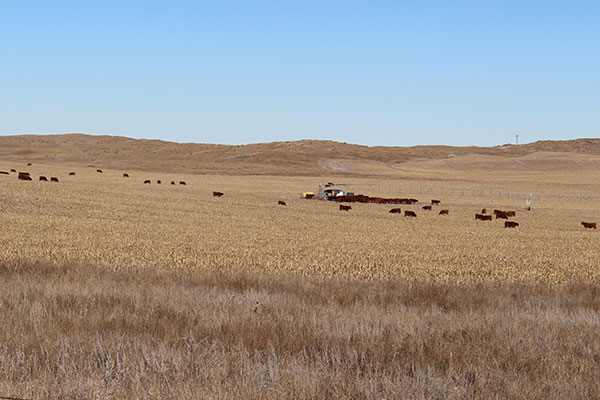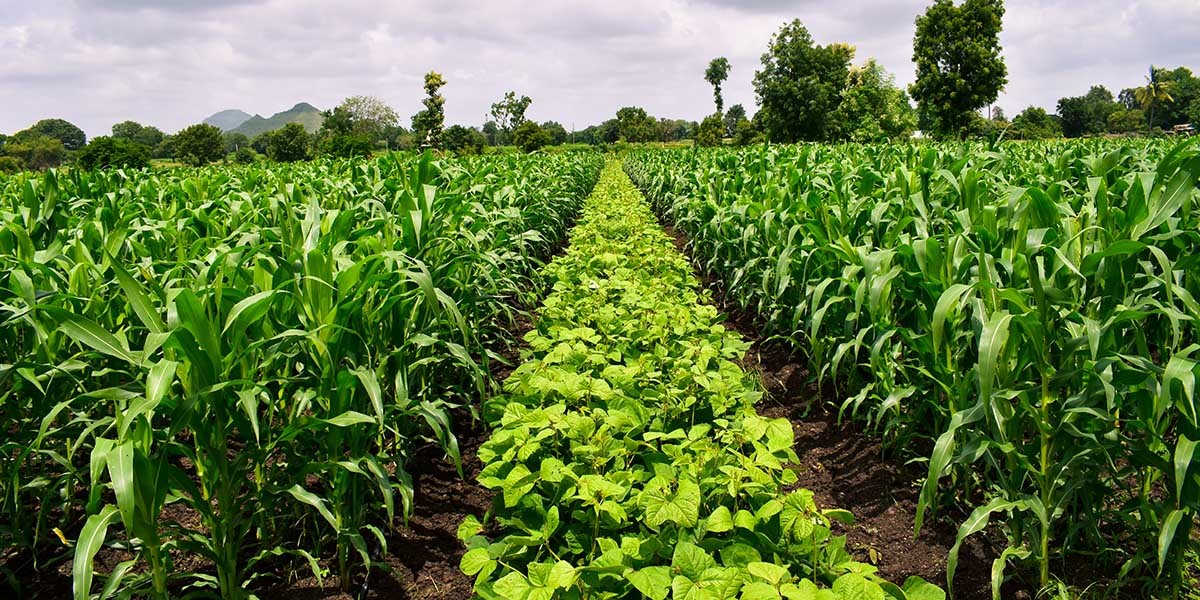Integrating Agroforestry into Punjab Crop Rotation

Agroforestry is a land management system that integrates trees and shrubs with crops and/or livestock. It can provide a number of benefits to farmers, including increased crop yields, improved soil health, and reduced erosion.

In Punjab, agroforestry can be integrated into crop rotations in a number of ways. One common approach is to plant trees or shrubs in rows between crops. This can provide shade and protection from the wind, which can help to increase crop yields. Trees can also help to improve soil health by adding organic matter and nutrients to the soil.

Another approach to agroforestry is to plant trees or shrubs on the edges of fields or along waterways. This can help to reduce erosion and improve water quality. Trees can also provide habitat for wildlife, which can help to control pests and diseases.
The benefits of agroforestry can be significant. A study by the World Agroforestry Centre found that agroforestry can increase crop yields by up to 30%. Agroforestry can also improve soil health, reduce erosion, and provide habitat for wildlife.
If you are a farmer in Punjab, you may want to consider integrating agroforestry into your crop rotation. Agroforestry can provide a number of benefits to farmers, including increased crop yields, improved soil health, and reduced erosion.
Specific Examples of Agroforestry in Punjab Crop Rotation
- Tree rows between crops: Trees or shrubs can be planted in rows between crops to provide shade, wind protection, and improved soil health. Common tree species used for this purpose in Punjab include eucalyptus, poplar, and mulberry.
- Trees on field edges: Trees can be planted on the edges of fields to reduce erosion and improve water quality. Common tree species used for this purpose in Punjab include neem, ber, and amla.
- Trees along waterways: Trees can be planted along waterways to reduce erosion, improve water quality, and provide habitat for wildlife. Common tree species used for this purpose in Punjab include willow, bamboo, and sycamore.
Benefits of Agroforestry in Punjab Crop Rotation
- Increased crop yields: Agroforestry can increase crop yields by up to 30%. This is due to the shade, wind protection, and improved soil health that trees and shrubs provide.
- Improved soil health: Trees and shrubs can help to improve soil health by adding organic matter and nutrients to the soil. This can lead to increased crop yields and improved water infiltration.
- Reduced erosion: Trees and shrubs can help to reduce erosion by holding the soil in place. This is especially important in areas with sloping land or heavy rainfall.
- Improved water quality: Trees and shrubs can help to improve water quality by filtering pollutants from the water. This can help to protect water supplies and improve the health of aquatic ecosystems.
- Habitat for wildlife: Trees and shrubs can provide habitat for wildlife, which can help to control pests and diseases. This can lead to increased crop yields and reduced pesticide use.
Conclusion
Agroforestry is a land management system that can provide a number of benefits to farmers in Punjab. Agroforestry can increase crop yields, improve soil health, reduce erosion, and provide habitat for wildlife. If you are a farmer in Punjab, you may want to consider integrating agroforestry into your crop rotation.## Integrating Agroforestry Into Punjab Crop Rotation
Executive Summary
Agroforestry, the integration of trees into agricultural systems, offers immense benefits to Punjab’s crop rotation practices. By diversifying farming systems, enhancing soil health, and increasing economic resilience, agroforestry holds the potential to transform Punjab’s agricultural landscape. This article explores the key subtopics related to agroforestry in Punjab, providing farmers and policymakers with a comprehensive understanding of its benefits and implementation.
Introduction
Punjab, a leading agricultural state in India, primarily relies on intensive crop rotation systems to meet its food demands. However, the current practices have led to soil degradation, reduced water availability, and declining farm incomes. Agroforestry emerges as a sustainable solution to address these challenges while improving overall agricultural productivity and ecosystem services.
FAQs
- What is Agroforestry?
- Agroforestry is a land management system that intentionally combines trees, shrubs, and crops or livestock on the same piece of land.
- Why is Agroforestry Important for Punjab?
- Punjab’s agriculture faces challenges such as soil erosion, water scarcity, and low crop diversity. Agroforestry can address these issues by improving soil health, enhancing water infiltration, and diversifying farm income.
- How Can Agroforestry be Implemented in Punjab?
- Agroforestry practices vary depending on the specific conditions of a farm. Common practices include silvopasture, alley cropping, and windbreaks.
Key Subtopics
Benefits of Agroforestry in Punjab
- Soil Health Improvement: Trees enhance soil structure, reduce erosion, and add organic matter.
- Water Conservation: Tree roots promote water infiltration and reduce runoff, improving soil moisture retention.
- Crop Diversity: Agroforestry systems allow farmers to grow multiple species, reducing risk and increasing resilience.
- Economic Resilience: Agroforestry provides additional sources of income, such as timber, fruits, and fodder.
- Carbon Sequestration: Trees absorb and store carbon dioxide, contributing to climate change mitigation.
Types of Agroforestry Systems
- Silvopasture: Integrating trees into grazing land to provide shade, shelter, and supplemental feed for livestock.
- Alley Cropping: Planting trees or shrubs in rows between crop rows to provide windbreaks, shade, and nutrient sources.
- Windbreaks: Rows of trees planted to reduce wind speed, protecting crops from damage and soil erosion.
- Hedgerows: Narrow strips of trees or shrubs planted around fields to provide boundaries, reduce soil erosion, and enhance biodiversity.
- Farm Ponds: Agroforestry systems often incorporate farm ponds for water storage and irrigation purposes.
Implementation Considerations
- Site Selection: Choosing suitable land based on soil type, slope, and water availability.
- Species Selection: Selecting tree species that complement the existing crop rotation and provide desired benefits.
- Spacing and Design: Determining the optimal spacing and arrangement of trees and crops to maximize productivity and minimize competition.
- Management Practices: Incorporating appropriate management practices such as pruning, thinning, and mulching to enhance tree growth and prevent competition.
- Monitoring and Evaluation: Regularly monitoring and evaluating the agroforestry system to assess its performance and make necessary adjustments.
Challenges and Opportunities
- Competition: Managing competition between trees and crops requires careful planning and management practices.
- Pest and Disease Management: Agroforestry systems may attract pests and diseases, necessitating integrated pest management approaches.
- Extension and Education: Providing farmers with training and support to promote the adoption of agroforestry practices.
- Policy Support: Government policies and incentives can encourage farmers to implement agroforestry systems.
- Research and Development: Ongoing research is crucial to develop tailored agroforestry practices for Punjab’s specific conditions.
Conclusion
Agroforestry holds immense potential to transform Punjab’s agricultural practices, addressing environmental challenges and enhancing economic resilience. By integrating trees into crop rotation systems, farmers can improve soil health, conserve water, diversify crop production, and increase farm incomes. Implementing agroforestry requires a collaborative approach involving farmers, policymakers, and researchers to effectively address challenges and maximize benefits. As Punjab embraces agroforestry, the state can set an example for sustainable and productive agriculture practices that ensure long-term food security and environmental health.
Keyword Tags
- Agroforestry in Punjab
- Benefits of Agroforestry
- Types of Agroforestry Systems
- Implementation Considerations
- Agroforestry Challenges and Opportunities